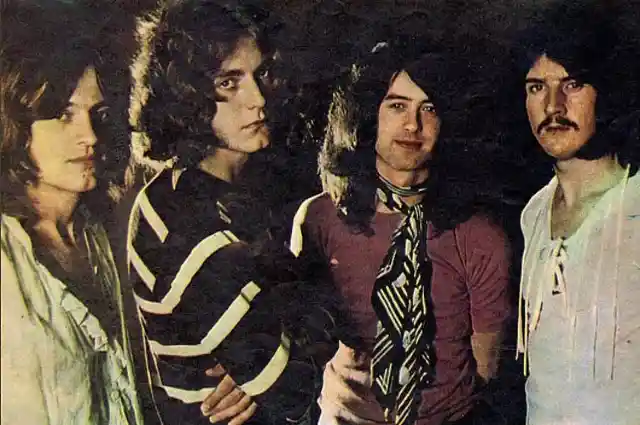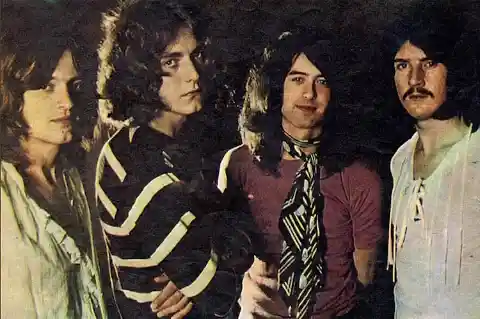All about The Blues
The impact of Led Zeppelin on hard rock is unparalleled. While John Bonham’s pounding drumming and John Paul Jones’s bass set the standard for what a true hard-rock rhythm unit should sound like, Robert Plant’s soaring vocals and Jimmy Page’s bluesy guitar have been constantly replicated. The group’s self-titled debut album came out in 1969 and it was immediately apparent that rock music was changing. Heavy metal foundations were being laid while hard rock gained popularity.
It was both a departure from the norm and a return to rock’s blues-based origins. These four British musicians found a way to draw from the roots of rock ‘n’ roll while moving toward a stronger sound.


Zeppelin emerged from the vibrant British blues culture; in fact, many of the bands that have come to be known as “classic rock” began as blues bands. One of the most popular blues or blues-rock bands of the era was Jimmy Page’s previous group, the Yardbirds, along with The Rolling Stones and The Animals. In the middle of the 1960s, Cream was arguably the most financially successful blues-rock band because of ex-Yardbird Eric Clapton’s work on the guitar. Fleetwood Mac started out as a blues band before becoming a yacht-rock staple. Jethro Tull started as a blues group before becoming known for introducing the flute to rock ‘n roll. Even Pink Floyd used to perform blues and R&B.
A New Band Is Born
Jimmy Page was a rockstar and talented session musician. Robert Plant was not; he had struggled for years to make it as a blues singer, even releasing a few singles that weren’t really heard. He Intermittently sang lead for the psychedelic blues band Band of Joy in the middle of the 1960s, which also featured John Bonham on drums. In the 60s, Band of Joy never released an album.
Terry Reid refused to join Page’s new band, suggesting instead that he check out Hobbstweedle, a Robert Plant-fronted band instead. Page and Plant connected right away, and Plant recruited John Bonham to the team. John Paul Jones sought to join as the bassist because he was familiar with Page through his session work.


What Happened To The Yardbirds?
Despite their breakup, The Yardbirds had a commitment to play a few shows in Scandinavia. In order to meet the obligation, Page and his new bandmates performed in Denmark, Sweden, and Norway in September 1968 under the name of the Yardbirds or New Yardbirds. Late in the month, as the band was swiftly coming together, they started recording their debut album. However, when the tour was over, they received a cease-and-desist letter telling them they were no longer the New Yardbirds.
The name “Led Zeppelin” was reportedly a joke by John Entwistle and Keith Moon, who said that such heavy blues music would be received “like a lead balloon.”
Covers
The blues, which Page and Plant loved, served as the foundation on which Led Zeppelin built their new music. Many of the songs they performed live together were adaptations of traditional blues tunes or brand-new compositions that incorporated bluesy elements. Two songs by Chicago bluesman Willie Dixon were covered in Led Zeppelin II and their self-titled first album, respectively.
Despite having more blues than metal, Led Zeppelin II has been referred to as the first heavy metal album. The blues served as the band’s main source of inspiration throughout its 12-year history, despite all of their innovations and experiments. This was especially true life, where many of the crowd favorites served as showcases for Page’s blues guitar power and Plant’s high-pitched vocals.


A Blues Comeback
Zeppelin has been famously in opposition to compilations or “greatest hits” collections, thinking about their albums to experience for listening that don’t need to be carved up and extracted. In fact, it wasn’t until 1990 that a real Zeppelin compilation was released, a three-disc container set titled Led Zeppelin. A neglected, never-launched classic from 1969 was brought out from the archives and released as a single. The song reached #7 on the US rock chart and wasn’t a Zeppelin original. It became a cover of Robert Johnson’s “Traveling Riverside Blues” in 1937.
Led Zeppelin came to be after much experimentation. The mixture of talent both instrumental and vocal paved a foundation for the band to become the worldwide sensation of its time and the highly-regarded group of today.